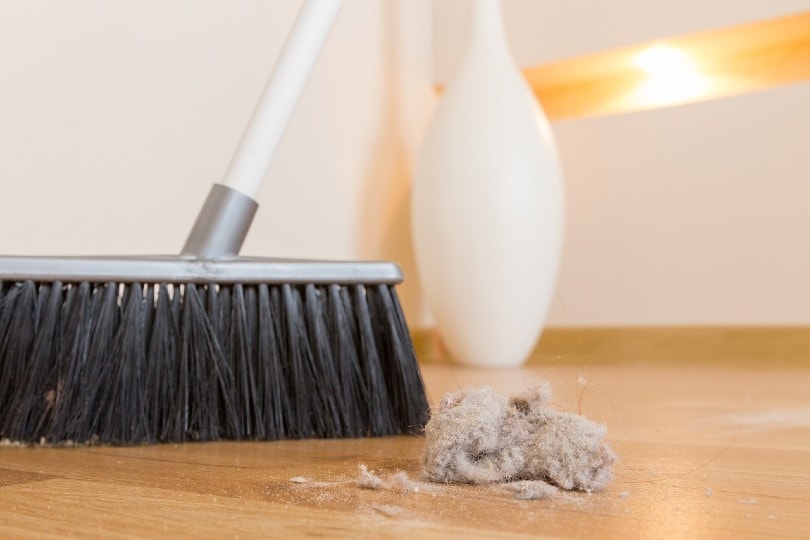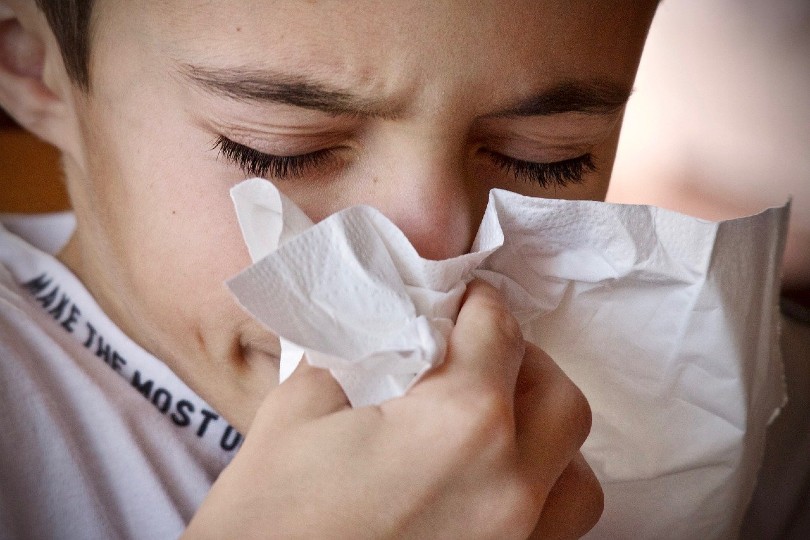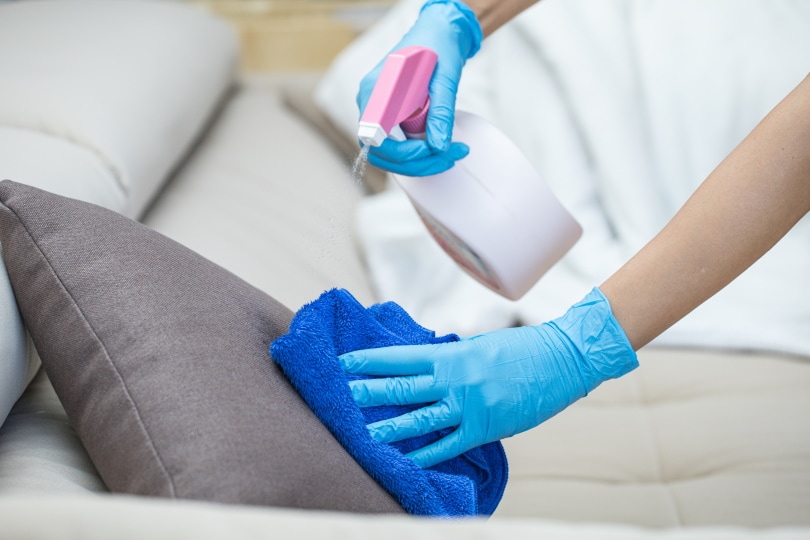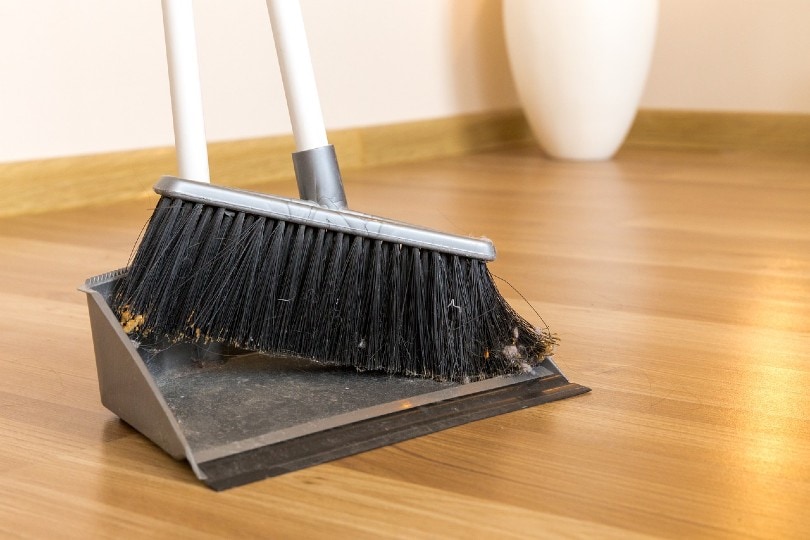Why Is My House So Dusty? 9 Possible Reasons
-
Pete Ortiz
- Last updated:

Dust is naturally occurring, and it is all around us, indoors as well as outdoors. While it does contain some dead skin cells, its components are much more complicated. It can contain clothing fibers, tiny mites, soil, and pollen. It can contain particles of sand or brick, depending on your atmosphere and where the dust originated, and it may even contain tiny little pieces of plastic.
Just because it is naturally forming, however, does not mean that we want an excess of it in our homes. In fact, it can cause allergic reactions and may exacerbate health problems such as asthma, and we can all benefit from keeping it to a minimum within the confines or our living spaces.
Below are 9 possible reasons that you have a seemingly very dusty house, as well as some possible solutions to help eradicate the problem and potentially prevent it from resurfacing in the future.
Why Is My House So Dusty? (9 Possible Reasons)
1. Dirty HVAC Filters
The filter of your HVAC should actually work to remove pollutants and allergens, which means that an efficient HVAC system can work to reduce dust levels, or at least prevent them from getting worse. However, if the filters are dirty, all the HVAC system is doing is pushing dirt and dust around the house.
Although this is a problem most associated with cheap filters, any HVAC filter can become dirty and clogged over time, which is why it is so important that you check them regularly and take action to clean the filters. Cleaning or replacing the filters is a simple task, although you should invest in decent quality replacement filters.

2. Unsuitable Filters
Cheap air filters tend to have larger holes. This means that more dust particles can get through the filter and into your rooms. No amount of cleaning will help in this instance, and by ensuring the holes aren’t blocked up or clogged, you could actually be allowing more of the dust to circulate.
As above, replacing the HVAC filter is a simple task. Ensure you buy one that is suitable and buy the best you can reasonably afford. Good-quality filters not only prevent more particles, but they will last longer, which means that they tend to be more cost effective than the cheap versions.
3. A Dry Environment
Most people know that a humid environment can be bad for your health and encourages bacteria and mold but removing too much humidity from the environment could also have a detrimental effect. Humidity does not reduce the amount of dust in the air, but it does make dust partices adhere to one another and because they are heavier, they will be less likely to float around in the air. They will sink to the ground so you and your family aren’t inhaling them, at least, and they should be easier to gather in the hoover or with a duster.
It is about finding a happy medium when it comes to humidity levels. You don’t want to add too much humidity to the environment, but you also want to avoid a bone dry atmosphere. A humidifier can add moisture, causing the dust to sink, but it won’t remove it. For that, you need an air purifier.

4. Pet Dander
Dander and small pieces of hair are some of the constituent components of dust, and if you have dogs or cats, they could naturally be adding to the dust in your home. Dander and hair naturally falls out of most pets, and it will gather with other particles, but if your cat or dog is especially itchy or suffering from some kind of dermatological condition, the problem will be magnified.
Regularly brush your pets. This enables you to gather the hair and dander in the brush and throw it away, rather than allowing it to naturally fall off in your home’s atmosphere.
5. Upholstery Needs a Clean
The furniture, drapes, and other fabrics and textiles gather dust. Then, when you open the curtains or sit on the sofa, this causes the dust particles to spread in the air. Textiles are worse than fabrics like leather for gathering these particles.
Modern vacuums come with a host of attachments and heads. Some of them can seem perplexing and useless, but one of the most useful is the upholstery attachment. Use this to clean your furniture and drapery every week to reduce the amount of dust particles they contain.

6. Dusty Carpets
Of course, the furniture and curtains are only a part of the fabric-based equation in your home. Carpets also gather dust and because we walk on them all the time, the dust barely has chance to settle before it gets kicked up in the air again. Deep pile and thick carpets, and especially those with tracks or lanes, are the worst offenders.
Regular hoovering helps, but it doesn’t get to all the dust particles. Use baking soda to help get rid of smells and deep shampoo the carpet every six months: three, if you have dogs and cats.
7. Dust Transferral
As easy as it might be to blame the dog, the cat, and the kids for bringing dust in, you could be just as responsible as they are. Whenever you step outside the house and return, you will bring some dust back in with you, and if you visit certain buildings or areas, the problem will be worse.
Take your jacket and shoes off as soon as you get home and put them away. Other than that, there isn’t much you can do about this, other than stop laying all the blame on the dog.

8. Gaps Around Door and Window Frames
Dust is everywhere, including outdoors. Every time you open the door or window, you will let a little dust in, although this may be offset by the introduction of some fresh air and the removal of stale air. However, if you have cracks or holes around the doors and windows, this is especially problematic, and it means that dust will be gradually entering your home all the time.
Caulk up any visible cracks and, if they are too large for a DIY caulk job, consider getting professionals in to make the repairs necessary. But be prepared for the fact that having your brickwork repaired will likely cause a lot of dust at the time.
9. Poor Dusting Technique
Yes, dusting technique really is a thing, and if yours isn’t up to scratch, then you aren’t doing a good job of removing dust particles from your home. They may settle back down only to be disturbed again when you move around.
Use a microfiber cloth that traps more of the dust particles, or if you use a rag ensure that it is damp when you start. Dust top surfaces before moving down, because any particles you don’t catch will likely fall to a lower surface. If you start at the bottom and work up, it means that missed dust will not be gathered. Also ensure that you dust walls down because dust particles gather on vertical surfaces as well as horizontal.

What Is Dust?
Dust is just very small particles of solid matter. This means that it contains whatever is prevalent in the area around, and that the makeup of dust does depend on where you are and what is in the surrounding area, but it can contain skin cells, hair, soil, sand, dust mites, pollen, bacteria, and even tiny molecules of plastic.
Is Dust Unhealthy?
For most people, dust is not unhealthy or does not pose any kind of serious health risk. However, it can contain pollen, and because it is made up of whatever is prevalent in the atmosphere, it could contain dangerous toxins. Dust is a problem when there is a lot of it and when people with allergies or respiratory problems come into regular contact with it.
How Can I Prevent Dust in the Future?
It is basically impossible to prevent all dust. It forms all the time, and considering it is formed from bacteria, skin cells, and dead bugs, it can form no matter how diligent you are. However, regular cleaning, good dusting technique, and installing an air purifier can help minimize dust levels, at least, and help remove dust almost as soon as it forms, keeping the problems to a minimum.
Conclusion
Dust is natural, and it forms all around us, all the time. It is inevitable that you will have some dust in your home, but too much of it can cause respiratory and other health problems, especially in those with allergies or medical conditions like asthma. You can cut down on the amount of dust by identifying the likely cause of a buildup, using the 9 tips above, and then taking the appropriate actions to help get rid of the problem as soon as possible.
- Related read: How Often Should You Dust Your House?
Featured Image Credit: Mariakray, Pixabay
Contents


